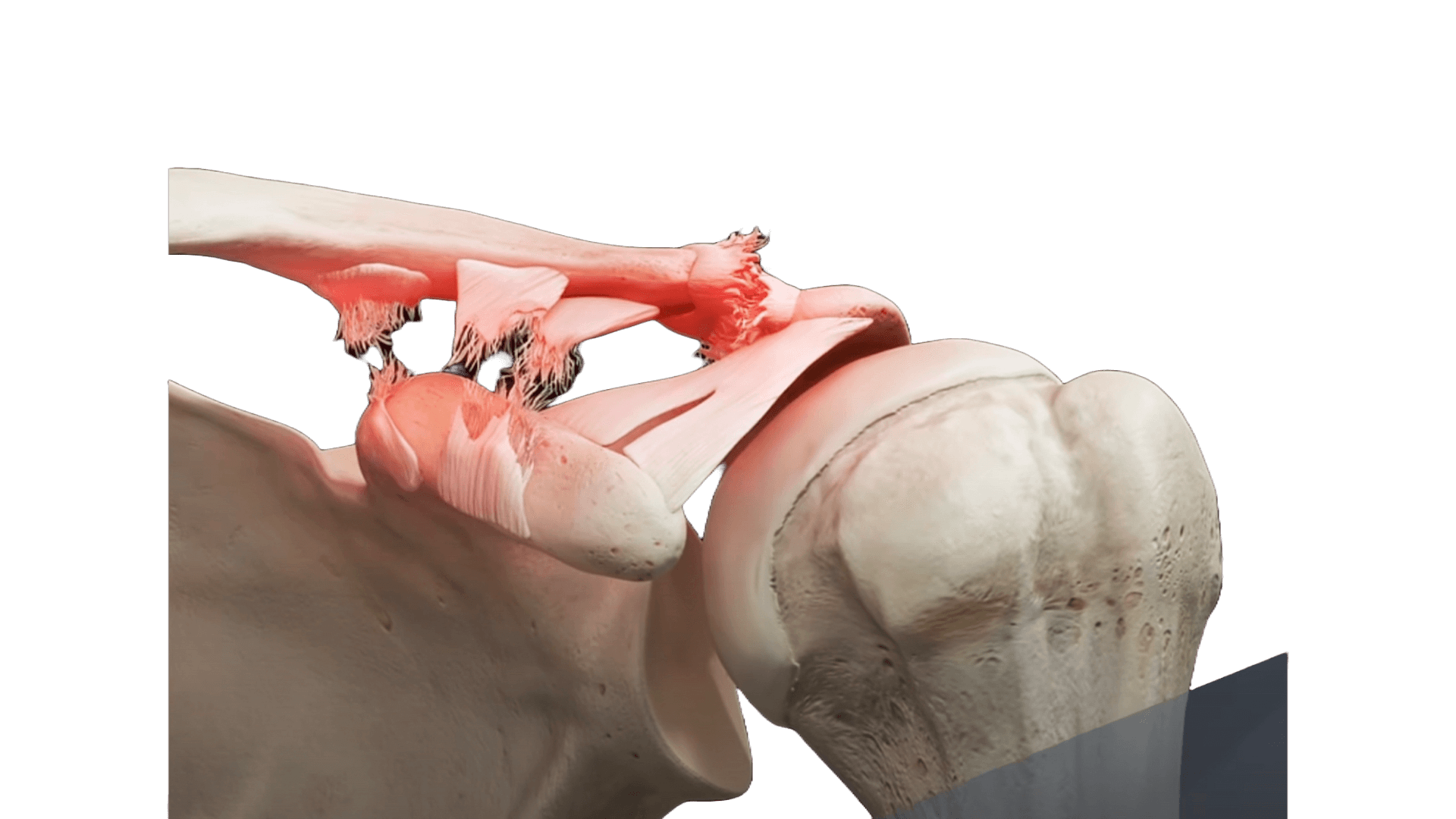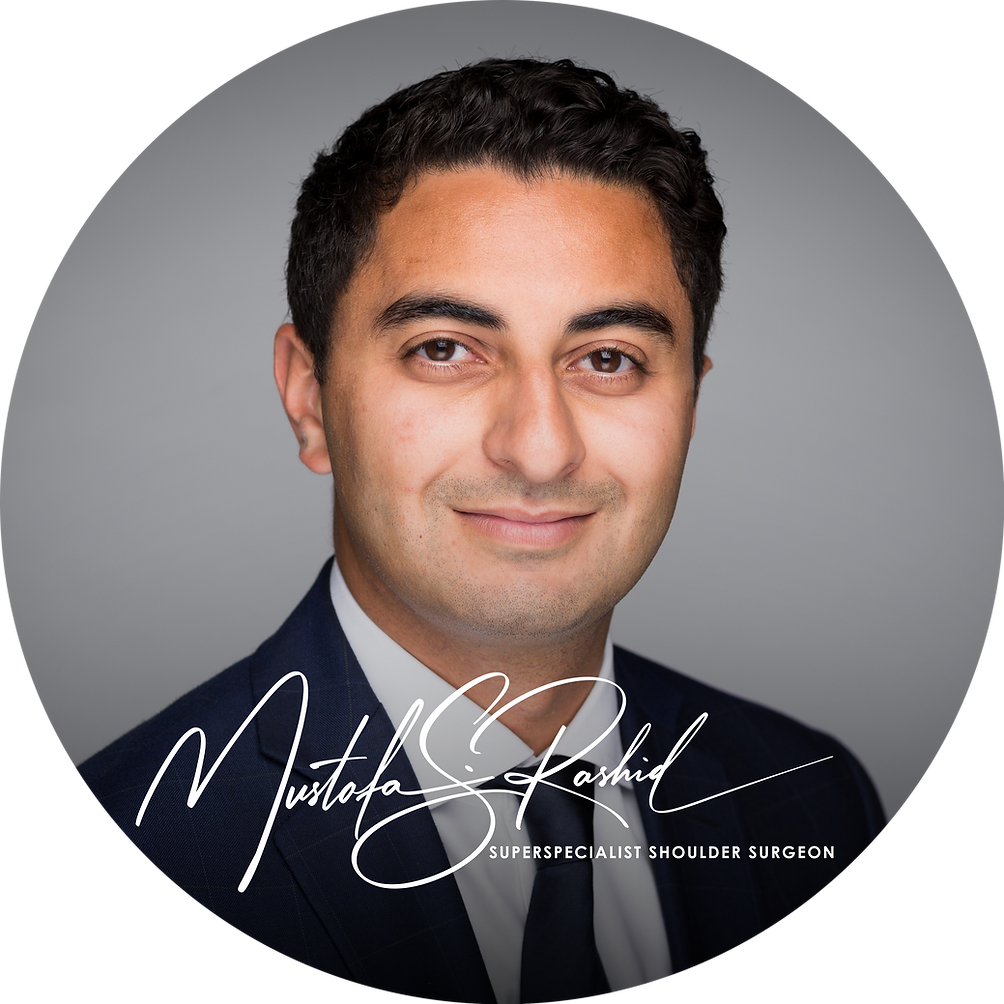ACJ Separations

Anatomy and Function
The AC joint, or acromioclavicular joint, is the joint above the shoulder joint. It is the joint between part of shoulder blade (acromion) and the collarbone (clavicle). It forms an important connection of the whole arm to the body. A stable ACJ joint is needed for the arm and shoulder to be able to move freely and without pain
Types of ACJ separations / dislocations
Most people who injury their AC joint will do so from a direct fall onto their shoulder. The force on the shoulder may damage various important structures around the AC joint. The AC joint is surrounding by a capsule, which has ligaments within it. These are often the first to be injured. They can be sprained, or torn. If the force is greater, then the ligaments connecting the collarbone and the shoulder blade may also be torn. If this occurs, a high grade injury may have occurred.
Symptoms
ain is the most common symptom in the early phase. This pain will often subside with time, but it may take a few weeks or even months. Often, when the AC joint is not obviously separated, making the diagnosis requires a specialist, like Dr. Rashid. In high grade separations, the end of the collarbone looks like it is higher and more prominent that the rest of the shoulder. If the AC joint is not stable, then you may struggle to lift your arm in front of you without pain.
Diagnosis
Most of the time, the diagnosis is made by examination and x-rays. Dr. Rashid utilises specific x-rays that are not commonly done, to determine the severity of the injury. Occasionally, a MRI scan is helpful to determine which structures are injured and in lower grade injuries, to make the correct diagnosis.
Do I need surgery to repair my AC joint separation?
Most people, even professional athletes can compensate for most AC joint injuries, even if they are high grade injuries. It can be difficult to predict who will be able to return to full and unrestricted activities without surgery and who will require AC joint stabilisation surgery to return to normal. Dr. Rashid will perform a detailed assessment and help guide your decision.
Surgical Treatment Options
Dr. Rashid uses the most advanced and proven techniques to stabilise the AC joint. For acute repairs, an arthroscopic (keyhole) technique is used to restore the connection between the collarbone and shoulder blade. This technique relies on healing of your own torn ligaments, and therefore should be done within 3 weeks of the injury. For patients that wish to rehabilitate first to see if they can compensate for their AC joint injury, a different technique may be used for those that require later surgery. This technique is an open approach (scar at the front of the shoulder) and uses a strong synthetic ligament to restore stability. This technique can be done at any time.
Risks and outcomes of surgery
Like any operation, AC joint stabilisation surgery has risks. Although these are not common, they are significant. Dr. Rashid will explain these risks to you in detail if you choose to consider surgery. Surgery is performed under general anaesthetic. Infection is an uncommon but serious complication. You will be given antibiotics when under general anaesthesia to reduce this risk. Dr Rashid uses absorbable and antimicrobial coated sutures buried under the skin. Nerve injury is rare. Some patients may notice the lump, even after surgery. Most patients are satisfied with the outcome of surgery. The goals of surgery are to allow full return to pain-free activity and sport. Most people are able to achieve this goal, however several months of quality rehabilitation is needed to strengthen your shoulder after surgery.
Self-Management and Lifestyle Tips
Both low and high grade injuries benefit from physical therapy to return movement, strength and stability to the shoulder. The pain gradually decreases with time in most people. As you progress through your guided rehab, you will notice more movement and greater ability to use the shoulder. If you decide to opt for non-surgical treatment, Dr. Rashid will evaluate your shoulder recovery over a few months. If at any point, you feel that things are not improving, we can change your treatment plan and switch to surgery. Certain activities, such as direct overhead press activities with weight, or activities where your arm is brought across your chest may aggravate your symptoms. Over time, most people will be able to return to normal. The lump will usually not reduce in size with time.
About the Author

Mustafa Rashid
Dr. Mustafa Rashid is an award-winning, well published superspecialised surgeon from the UK, specialising in shoulders
